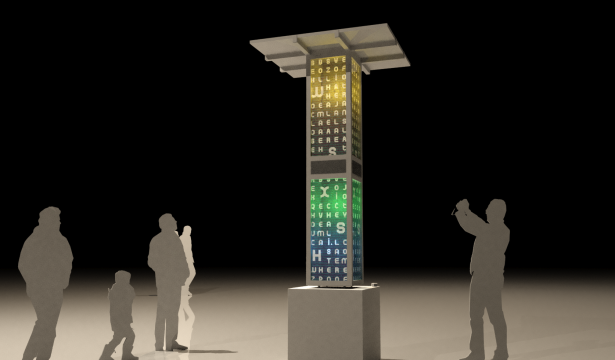Chatterbox is an interactive installation that allows audiences to communicate with it through proximity. Chatterbox plays on the idea that voice communication is possible, even in times of social distancing, but that it can be unclear—especially when technology is involved. We are increasingly used to interacting with technology through voice ‘commands’ but this work reinforces that fact that these interactions are often awkward or misconstrued, thus revealing their artificiality. Chatterbox is also fun and entertaining, often surprising passers-by calling out to them.
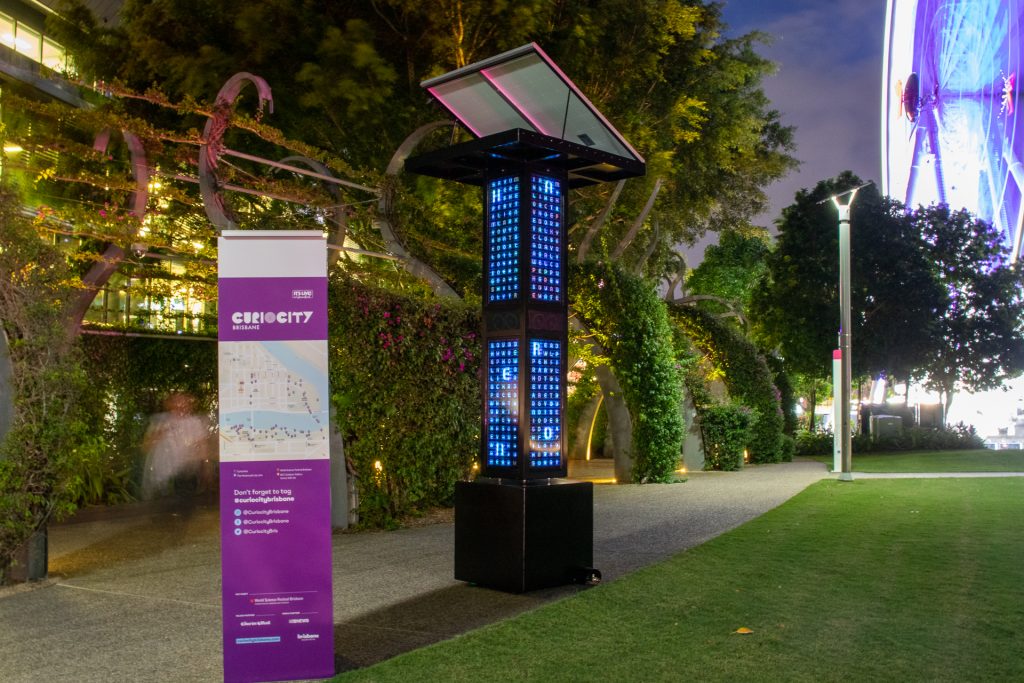
Chatterbox is an interactive audio-visual installation that allows the public to ‘play’ a bespoke sculptural instrument by approaching and moving their bodies nearby the human-sized sculptural form. The Chatterbox sound world consists of abstract speech-like utterances that vary from ‘calls’ to ‘whispers’ according to the participant’s distance from the instrument. Electronically controlled illumination acts in concert with the sounds to produce audiovisual behaviours. Drawing on a century-long tradition of interactive sonic devices, starting with the Theremin and Russolo noise machines in the early 1900s, Chatterbox reimagines these gestural-mechanical experiences as public art for a new century using digital electronics and renewable power.
Body
The chatterbox structure is a rectangular steel column with poly carbonate side panels. This column sits atop a stabilising plinth filled 1/2 ton of water. On top of the column is a solar panel array that powers the installation, so it can run indefinitely outdoors.

Senses
Chatterbox uses motion sensors to detect the proximity and direction of people around it. It’s chatting behavior responds to these movements.

Language
The side panels are covered with a matrix of letters that display its vocabulary. LED lights behind the panels illuminate combinations of letters to help reveal, and at times confuse, this vocabulary.
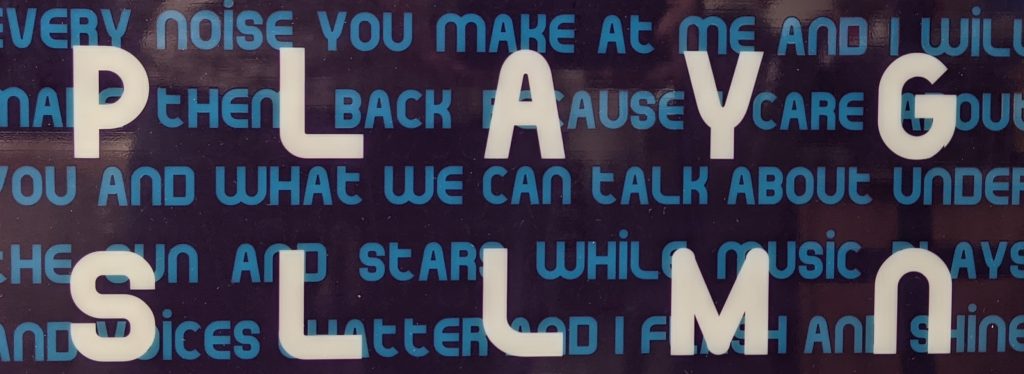
Voice
Audible ‘Chatter’ is delivered via loudspeakers on each side of the column and consists of fragments of recorded speech of the vocabulary. Chatting behaviour is algorithmically controlled and responds to motion and proximity. At times speech and illuminated text are synchronised, assisting with partial decoding of the recorded phrases. The chatting behaviours are controlled in real-time by interactive algorithms running on a microprocessor inside Chatterbox.

Thanks to Brisbane radio personalities, Katherine Feeney and Spencer Howson, for being the voices of Chatterbox.

Energy
Chatterbox is powered by its Photovoltaic solar panels and battery packs. The installation automatically starts up and powers down each day, and adjusts lighting activity to manage its energy reserves.
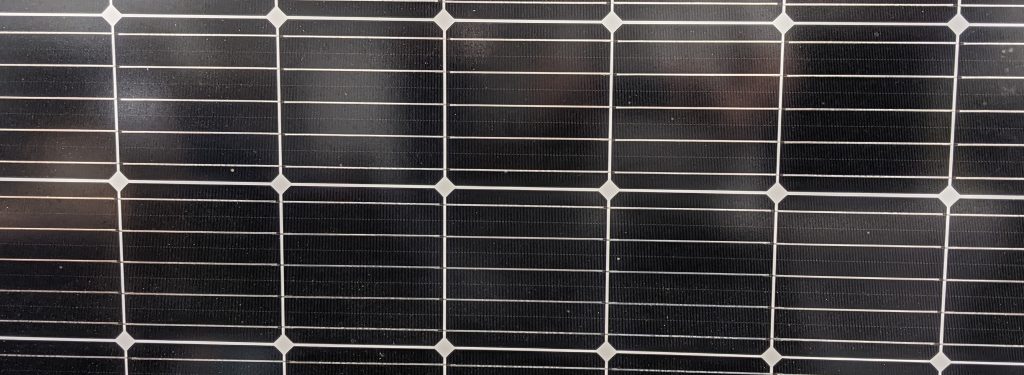
Exhibition
Chatterbox was premiered at the Curiocity Brisbane festival from March 12-29 2021.

Chatterbox was exhibited as part of Designing Culture, at the Pop Gallery in Brisbane, Australia, from May 25 – June 4 2021.
Creative Team
Chatterbox was designed and built by Andrew R. Brown, Daniel Della-Bosca, John Ferguson, David Harris, Timothy Tate and Jason Nelson.
The creators are members of the Interactive Media Lab based at Griffith University, South Bank campus. They include staff and doctoral candidates from the Queensland College of Art and the Queensland Conservatorium. The team includes a range of complementary skills across music, media art, product design, and interaction design. Each team member is an active media artist in their own right and have a history of collaboration in various combinations.
Making Chatterbox
Designing and making Chatterbox involved a range of technical processes including 3D modelling, computer programming, audio editing, power management, and PCB manufacture. These processes were conducted in the service of the interaction design and to ensure a robust and safe installation. Below are some images from these making processes. The project was a true integration of creative arts and science.
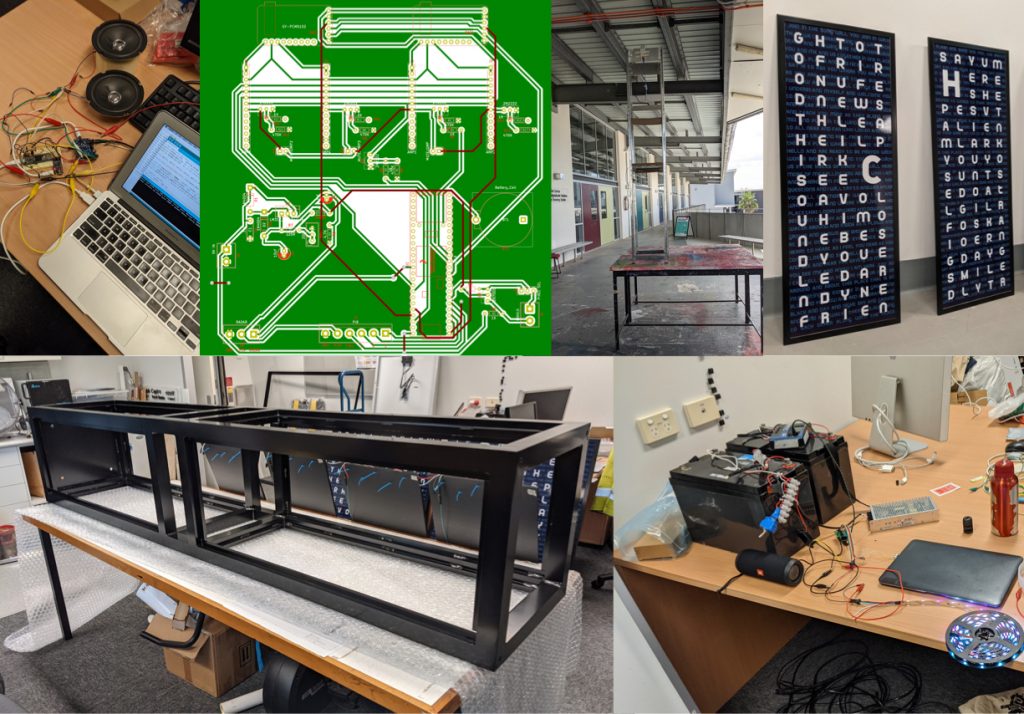
Link to this page directly via: http://chatterboxproject.net

